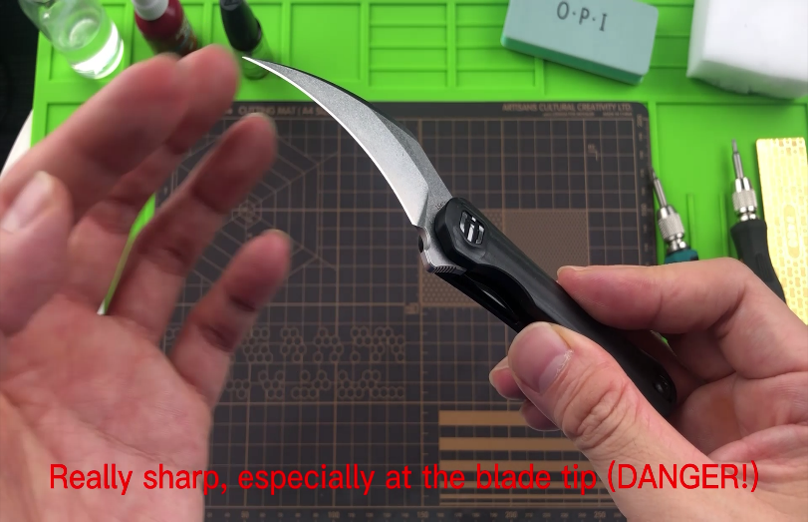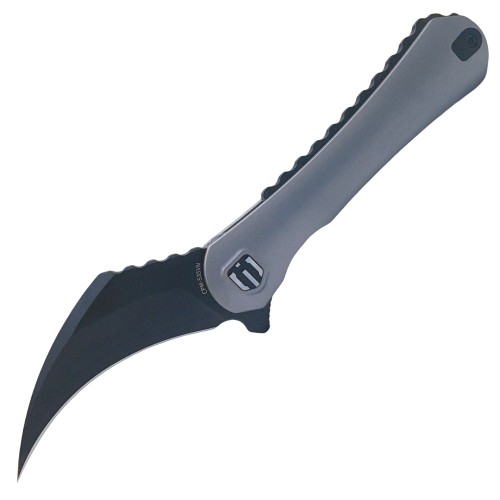
Comprehensive Guide to Mastering Pikal for Practical Defense
"Pikal,"
a term from the Visayan language in the Philippines, directly translates to
"to rip."
This
technique is a foundational element of traditional Filipino martial arts,
notably in systems like Pekiti-Tersia and the Sayoc family's teachings.
Pikal
involves wielding the knife in a reversed grip, with the blade oriented
inwards, focusing on piercing actions.
Attack
patterns in Pikal are typically categorized as either forehand or backhand
strikes, which could be delivered across various planes: diagonal, horizontal,
upwards, or downwards.
The interest
in Pikal has spiked, with numerous online forums hosting robust discussions and
interactive sessions.
The purpose
of this article is to demystify Pikal for enthusiasts seeking to grasp its
practical applications, presenting a unique perspective and interpretation of
this combat form.
Fundamental
Techniques of Pikal - Practical Drills In practicing Pikal, there is a
multitude of flow drills available. Many, however, may introduce undue
complexity and detract from the system's core simplicity.
While these
drills help understand movement mechanics, they shouldn't be mistaken for
real-world applicability.
Emphasis
should be on drills that have direct relevance, such as knife-tapping and
Sigan-Labo, to hone these skills for practical use.
Pikal's
philosophy is straightforward and assertive; it's not about moving in sync with
an adversary but about assertive, decisive penetration, akin to a sewing
machine's swift and precise punctures.
Some may try
to oversimplify Pikal to mask their limited formal training in the discipline,
which can undermine the crucial components that make Pikal effective: footwork,
force application, and kinetic principles.
These
components are indispensable; without them, Pikal loses its dynamic essence and
effectiveness. Footwork is essential to close in and strike effectively; power
is the driving force behind the blade's penetration through barriers; and
proper body mechanics enable the disruption of the thrust line—a concept this
article’s author places great emphasis on in their Pikal practice.
With a focus
on these essential elements, Pikal becomes a formidable combat tool.
In essence,
Pikal training should steer clear of ornamental drills and instead concentrate
on practical, applicable techniques.
A
straightforward, powerful method is favored, highlighting the necessity of
precise footwork, forceful execution, and efficient body dynamics.
Incorporating
these principles ensures that Pikal remains an effective method of defense.
In-Depth Application of Pikal Adopting the Correct Stance and Positioning in Pikal
An effective
Pikal stance involves leading with the weapon-bearing side, keeping the
weapon’s point directed at the adversary.
The other
hand stays retracted for protection. Agility is key, so positioning on the
balls of the feet, ready to strike or retreat swiftly, is vital, as is a
condensed, guarded posture. Refining the Keystroke: The Rapid Back-Hand Jab
The
back-hand jab is a pivotal Pikal maneuver resembling the quick thrust.
Its
conceptual lineage includes the WWII Close Combat's edge-of-hand blow and FMA’s
eye-jab in its execution style.
Delivered
incognito, the jab springs directly from the knife’s resting position. The
upcoming illustrations will clarify the jab’s initiation from the core stance.
Delivering a Powerful, Focused Jab
The jab must
travel in a straight line to its target, maintaining consistent height.
As depicted,
the arm moves subtly from the face level down towards the armpit, enhancing the
jab's stability and precision. Optimizing the Jab's Impact
On contact,
angling the body slightly can extend reach, while engaging the shoulder and hip
can amplify the force, essential for piercing through resistance.
A sharp,
vigorous jab is paramount, as it should also be retractable with speed,
doubling the rate of the outward motion. This technique is not just about
speed—it enhances the power necessary for grappling an appendage or cutting to
the bone.
Exploiting the Jab: Dynamic and Offensive Strategies
As Pikal's
cornerstone, the jab is versatile, serving well in various combat ranges.
Once
mastered, it allows for maintaining distance or bridging gaps with adversaries,
always focusing on quick, potent delivery.
This method
exudes an aggressive energy more reminiscent of a tactical incursion than the
graceful exchanges characteristic of Filipino Martial Arts. Pikal's approach is
direct and no-nonsense.
- Start with quick succession jabs
targeting upper, middle, and lower areas. These should be executed with
both speed and power.
- Should your jabbing motion be
disrupted, take this chance to throw a simultaneous counter-strike or
kick, capturing the obstructing limb and slicing deeply into it.
- Employ your free hand to remove
any obstruction to your jabbing trajectory and resume your piercing
attacks. Mix in knee strikes, low-line kicks, elbow jabs, and body control
into your assault repertoire.
At the heart
of this strategy lies its effectiveness, capable of neutralizing armed
assailants and unarmed aggressors alike.
The series
of images provided exemplifies an armed adversary's interruption of a
back-handed thrust with his right arm, knife in hand.
Advancing
forward, the defender hooks the attacker’s arm, disarming and destabilizing him
while delivering a powerful palm heel to the face.
The inward
positioning of the knife's blade is crucial for the success of this technique.
The strike
is followed by a dynamic sweep aimed at the attacker's weapon-bearing arm,
coupled with a strong hooking motion, temporarily disabling the attacker and
creating a pinned state.
Applying Relentless Assault and Precision Thrusts for Optimal Effect
Sustaining
relentless pressure, the defender executes a sharp forehand thrust into the
attacker's center, proceeding with a sequence of vicious and precise thrusts
targeting vital areas such as the abdomen, chest, and throat.
The intent
is not merely to disarm but to incapacitate through causing significant blood
loss and trauma.
Reflective Counteractions during a Forehand Thrust Encounter
In the
depicted exchange, both parties engage in a forehand thrust, leading to an
interception along the inner attack line, mirroring each other's positions.
While
technical knowledge of hooking maneuvers on the opponent's part cannot be
assumed, the victor is the one who first proficiently applies the technique.
Navigating Stalemates and Gaining the Upper Hand with Tactical Maneuvers
In
traditional FMA, such a standoff might be resolved through a pre-arranged flow
drill, yet in practical terms, immediate targeting of the lower body with a
knee or low-line kick offers a swift resolution.
This
disrupts the adversary's decision-making cycle, asserting the initiative in the
encounter.
When
delivering a knee or kick, it's critical to simultaneously hook the obstructive
limb with your blade and pull back forcefully, creating a temporary halt in the
action.
This move
demands precise footwork and an aggressive, forward-moving strategy. A passive
approach here is counterproductive; decisive action is key.
After
successfully performing the hook, shear, and clear, continuity in the
established line of attack is maintained.
Synchronized Defense: Repelling a Forehand Assault
Faced with
an opponent's forehand thrust, the defender quickly intercepts with their
weapon hand while launching a palm strike to the assailant's face, merging
defense and counterattack in one fluid motion.
Upon jamming
the opponent's arm, the next move involves a cross-jam against the obstruction,
paired with a series of targeted midline thrusts.
Strategic Response: Neutralizing a Forehand Offensive
When faced
with an inside arc forehand strike, the defender must immediately jam the
attacker's weapon hand on the inside line.
Simultaneously
with the jam, a powerful backhand thrust is launched, targeting the attacker's
center.
Tactical Approach: Engaging and Redirecting the Attacker’s Weapon Hand
Continuing
the defense, the defender hooks inside the attacker's weapon hand and executes
a downward pass, redirecting the opponent's arm effectively.
Mastering
this technique relies on the constant forward momentum and precisely judging
the reach needed to keep the opponent's blade at bay from one's body.
Perfecting
low-line passing, a skill best acquired through drills such as knife tapping,
offers a nuanced command of this tactic that's difficult to replicate with
other training methods.
One must be
cognizant of the risks that low-line passing poses compared to high-line
passing, although it remains a viable option under certain circumstances.
While
performing this passing maneuver, which involves sweeping the knife across and
pivoting at the hips, there's an additional layer added to the move.
In unison, a
firm palm strike to the adversary's face with the left hand complements the
knife's redirection, weaving together an intricate pattern of defense and
attack. Relentless Attack: Cross-Checking and Thrusting
Directly
after the palm strike, one fluidly moves into a cross-check, using the left
hand to push against the opponent's elbow.
This sets
the stage for a direct forehand thrust to the opponent's core, targeting
vulnerable areas like the abdomen, groin, and inner thigh, ensuring an unbroken
chain of offensive tactics.
Defense Against a Backhand Slash: Engaging the Weapon Hand
When faced
with a backhand slash from the opponent, the individual quickly engages by
intercepting the opponent's weapon hand from the outside, using their left hand
to gain an advantage.
Progressing with Determination: Penetrating the Opponent's Guard
To continue
an aggressive advance and remain engaged at close quarters, the individual uses
a technique to pass and press the opponent's weapon arm down and inward, while
simultaneously delivering a robust forehand thrust.
Although
traditionally it's beneficial to remain on the outer side, the individual's
stance calls for a slight adjustment to exploit the blade and push forward,
opening up a gap in the opponent's defense.
Rapid Defense and Retaliation: Blocking and Midline Thrusting
In reaction
to an opponent's forehand slash, the individual immediately counters by
blocking the attack with their left hand.
Following
this defensive action, they promptly execute a counter-thrust along the
opponent's midline, aiming to disrupt the attack and take command of the
situation.
Breaking the Flow: Executing a Rapid Knee Strike
After
successfully blocking and countering, the individual further disrupts the
opponent by swiftly delivering a knee strike, aimed at disturbing their rhythm
and opening a window of advantage for themselves.
Fluid Movement: Redirecting and Keeping the Initiative
Following
the knee strike, the individual continues their momentum by performing a
high-line pass of the opponent's knife hand, directing it outward to maintain
control and steer the weapon.
Decisive Conclusion: Forehand Thrust to the Neck
To finalize
the assault, the individual carries out a decisive forehand thrust, targeting
the opponent's neck with precision, designed to incapacitate and terminate the
altercation.
In the
culmination of the passing maneuver, the individual seizes the chance to assert
dominance, striking the opponent's ribs with a forceful edge-of-hand blow,
preventing any regrouping and cementing their superior position.
Key Insights
To sum up,
the sequences demonstrated here underline the tactical sophistication and
effectiveness inherent in Pikal techniques.
By
internalizing the essentials of flow, timing, accuracy, and sustained
aggression, practitioners can cultivate a powerful arsenal for self-protection
and combat scenarios.
Commitment
to understanding Pikal's foundational strategies will equip individuals to
handle conflicts with assuredness and decisiveness.
Maintain a
dedicated practice regimen and always prioritize safety as you refine your
skills.
Explore more
Shieldon EDC knives and tools for additional enjoyment and utility in your
practice.




Leave your comment
Note: HTML is not translated!